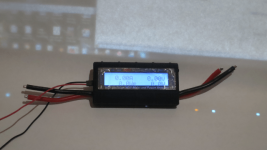Greggie-e
1 mW
Hey guys sorry if this has been covered before (I did look).
I keep killing watt meters, well two anyway.
the first was one of these
http://www.ebay.com.au/itm/Digital-LCD-60V-100A-Balance-Voltage-Battery-Power-Analyzer-Watt-Meter-Checker-/251354753090?pt=AU_Toys_Hobbies_Radio_Controlled_Vehicles&hash=item3a85e92842&_uhb=1
I had the bike for about two weeks and the display just stopped working.
The bike still ran so after a couple of weeks I replaced it with one of these
http://www.ebay.com.au/itm/GT-Power-RC-130A-LCD-Battery-Balance-Watt-Meter-Meter-Power-Analyzer-/390730661509?pt=AU_B_I_Electrical_Test_Equipment&hash=item5af95cbe85&_uhb=1
They both seemed to have failed after I left the bike parked for a few hours without disconnecting the power.
Is this a case of my stupidity in not turning it off and overheating something, or do I have a more serious issue?
I have an EM3EV 50volt triangle battery
http://em3ev.com/store/index.php?route=product/product&path=35&product_id=123
and a 1000Watt hub motor.
cheers,
Greg
I keep killing watt meters, well two anyway.
the first was one of these
http://www.ebay.com.au/itm/Digital-LCD-60V-100A-Balance-Voltage-Battery-Power-Analyzer-Watt-Meter-Checker-/251354753090?pt=AU_Toys_Hobbies_Radio_Controlled_Vehicles&hash=item3a85e92842&_uhb=1
I had the bike for about two weeks and the display just stopped working.
The bike still ran so after a couple of weeks I replaced it with one of these
http://www.ebay.com.au/itm/GT-Power-RC-130A-LCD-Battery-Balance-Watt-Meter-Meter-Power-Analyzer-/390730661509?pt=AU_B_I_Electrical_Test_Equipment&hash=item5af95cbe85&_uhb=1
They both seemed to have failed after I left the bike parked for a few hours without disconnecting the power.
Is this a case of my stupidity in not turning it off and overheating something, or do I have a more serious issue?
I have an EM3EV 50volt triangle battery
http://em3ev.com/store/index.php?route=product/product&path=35&product_id=123
and a 1000Watt hub motor.
cheers,
Greg








